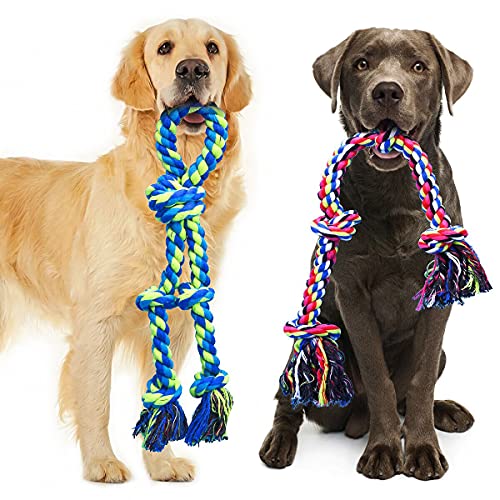Key Takeaways
- Understanding Tick Risks: Ticks pose significant health threats to Golden Retrievers, potentially transmitting diseases such as Lyme disease and Rocky Mountain spotted fever.
- Prevention is Key: Implement effective prevention strategies like regular grooming, using tick-repellent products, and maintaining good hygiene to keep your dog protected from ticks.
- Identifying Ticks: Regular visual inspections and monitoring for signs of tick infestation, such as scratching or lethargy, are essential for early detection and treatment.
- Safe Tick Removal: Proper techniques for tick removal involve using tweezers to pull steadily without twisting, followed by cleaning the bite area and monitoring for symptoms.
- Veterinary Guidance: Always seek veterinary care if your dog displays unusual behaviors or symptoms associated with tick-borne illnesses; routine check-ups can help detect issues early.
Golden Retrievers are known for their friendly nature and playful spirit, but they can face challenges when it comes to pesky pests like ticks. As a proud owner of one of these lovable companions, I understand the importance of keeping them safe and healthy, especially during outdoor adventures. Ticks not only cause discomfort but can also lead to serious health issues if left untreated.
Understanding Ticks and Their Impact
Ticks pose significant threats to Golden Retrievers, especially during outdoor adventures. These small parasites latch onto dogs, feeding on their blood and potentially causing health issues.
Common Tick Types Affecting Golden Retrievers
Several tick species commonly affect Golden Retrievers, each with its unique habits and health implications:
- Deer Tick: Also known as the black-legged tick, this tick often carries Lyme disease, which is prevalent in forested areas.
- American Dog Tick: This species primarily feeds on dogs and is known for transmitting Rocky Mountain spotted fever.
- Brown Dog Tick: Found usually indoors, this tick can infest homes and transmit diseases like ehrlichiosis.
Each of these ticks can latch onto a Golden Retriever, posing risks in different environments.
Potential Health Risks of Ticks
Ticks can transmit various diseases that affect Golden Retrievers, leading to serious health concerns:
- Lyme Disease: Transmitted by deer ticks, symptoms include joint pain and fatigue. Early intervention is crucial.
- Rocky Mountain Spotted Fever: Caused by American dog ticks, it can result in fever and lethargy.
- Ehrlichiosis: Carried by brown dog ticks, this disease affects white blood cells, leading to a weakened immune system.
I ensure that any rescue dog under my care receives prompt attention to tick bites, as early detection is vital to their health and well-being.
Prevention Strategies for Ticks
Prevention is key to protecting Golden Retrievers from ticks. Implementing effective strategies keeps our playful pups healthy during outdoor adventures.
Proper Grooming Techniques
Grooming plays a significant role in tick prevention. I recommend brushing my Golden Retrievers at least once a week, ensuring I check their coats thoroughly for ticks. I focus on areas where ticks tend to hide, like around the ears, between the toes, and under the collar. Bathing them every month helps wash away any ticks that may have latched on and can remove any dirt or debris that attracts them. I also invest in high-quality grooming tools that allow me to efficiently check and maintain their fur.
Tick-Repellent Products
Using tick-repellent products is an effective way to minimize the risk of tick bites. I rely on veterinarian-recommended topical treatments, which provide long-lasting protection against ticks. These treatments usually last around 30 days and repel various tick species. I also consider using tick collars that offer an alternative option for protection, ensuring they fit comfortably around my dog’s neck. For additional protection, I might apply natural repellents made from essential oils like lemongrass or cedarwood; these keep ticks at bay without exposing my dogs to harsh chemicals. Always consult with a veterinarian before introducing any new products to my pets’ routine.
Identifying Ticks on Your Golden Retriever
Identifying ticks on Golden Retrievers is crucial for their health and comfort. Regular checks can help prevent serious health issues and ensure your furry friend remains happy and active.
Visual Inspection Guidelines
- Check the Fur: Use your fingers to part the fur, especially around the neck, ears, and underbelly. Look for any unusual bumps or dark spots.
- Inspect the Skin: Examine the skin closely, as ticks can attach deeply. A magnifying glass can help spot smaller ticks.
- Look Between Toes: Don’t forget to check between the toes and in any skin folds. Ticks often hide in these less visible areas.
- Feel for Movement: Gently run your hands over your dog’s body to feel for any abnormal movement. Ticks may not always be visible but might be felt.
Symptoms of Tick Infestation
- Excessive Scratching: If your dog scratches more than usual, consider checking for ticks. This behavior might indicate irritation caused by bites.
- Lethargy: A noticeable lack of energy can signal tick-borne illnesses. If your Golden seems unusually tired, a tick check is essential.
- Loss of Appetite: If your dog refuses food, it may be feeling unwell due to tick-related issues.
- Fever: Elevation in body temperature may indicate an illness linked to ticks. If your dog feels warmer than usual, consult your vet.
- Swollen Joints: Ticks can cause arthritis-like symptoms. Monitor for any signs of swelling or discomfort when your Golden moves.
By following these guidelines, you can help protect your Golden Retriever from the dangers ticks pose, ensuring a healthier and happier life for your beloved pet.
Tick Removal Process
Removing ticks from a Golden Retriever is crucial for their health. These pests can transmit serious diseases, so tackling them promptly ensures a happier, healthier pet.
Safe Removal Techniques
To safely remove a tick, I follow these steps:
- Gather Supplies: I keep tweezers or a tick removal tool, antiseptic, and gloves handy.
- Stabilize the Dog: I have someone hold my Golden Retriever still to prevent sudden movements.
- Grasp the Tick: I use tweezers to grasp the tick as close to the dog’s skin as possible.
- Pull Steadily: I gently pull upward in a straight motion without twisting or jerking. This technique prevents parts of the tick from breaking off and remaining in the skin.
- Clean the Area: After removing the tick, I clean the bite area with antiseptic to reduce the risk of infections.
- Dispose of the Tick: I place the tick in a sealed bag and dispose of it. Sometimes, I save it for identification if I’m concerned about disease transmission.
Aftercare Following Tick Removal
Post-removal care is just as important. I always keep an eye on my dog for signs of potential problems:

- Monitor for Symptoms: I watch for any unusual behavior, such as excessive scratching, lethargy, or loss of appetite. If any symptoms develop, I consult a veterinarian.
- Apply Antiseptic: I reapply antiseptic to the bite area daily until it shows signs of healing.
- Consider Tick Testing: If the tick is identified as a species that carries diseases, I ask my vet about testing or preventive treatments.
- Update Preventive Measures: I review the effectiveness of my dog’s current tick prevention methods and adjust as necessary, ensuring we minimize the risk of future infestations.
« Golden Retriever Mix Shedding Guide: 10 Essential Tips to Manage Fur at Home
Why Golden Retrievers Love Fetch So Much: Discover the Secrets Behind Their Playful Passion »
These steps not only make tick removal easier but also help maintain my Golden Retriever’s overall well-being. By being vigilant and proactive, I ensure my furry friends stay healthy and happy.
When to Seek Veterinary Assistance
Being attentive to your Golden Retriever’s health is crucial, especially when dealing with ticks. Knowing when to consult a veterinarian can make all the difference in your dog’s well-being.
Signs That Require Professional Help
I keep a close eye on my dogs for any changes in behavior or health. If you notice signs like excessive scratching, lethargy, loss of appetite, fever, or swollen joints, it’s time to reach out to your vet. These symptoms often indicate tick-borne diseases that can escalate if left untreated. If you’re unsure, a quick call to the vet can provide peace of mind.
Regular Check-Ups for Tick-Related Issues
Regular veterinary check-ups play a vital role in maintaining your Golden Retriever’s health, especially if you live in tick-prone areas. I schedule annual wellness exams for my dogs to monitor any potential tick-related issues. During these visits, vets can conduct thorough physical examinations and recommend necessary tests for tick-borne diseases. It’s essential to keep a proactive approach to your dog’s health and stay informed about any risks associated with ticks.
Conclusion
Caring for my Golden Retriever means being vigilant about ticks and their potential dangers. By staying proactive with prevention strategies like regular grooming and using vet-recommended products, I can help keep my furry friend safe.
It’s crucial to check for ticks after outdoor adventures and know how to remove them properly. If I notice any unusual symptoms, I won’t hesitate to reach out to my vet.
With a little effort and attention, I can ensure my Golden Retriever enjoys a happy and healthy life, free from the worries of tick-borne illnesses.












![PetDroid Interactive Dog Toys Dog Ball,[2025 Newly Upgraded] Durable Motion](https://m.media-amazon.com/images/I/41P-nlk1L0L._SL500_.jpg)




